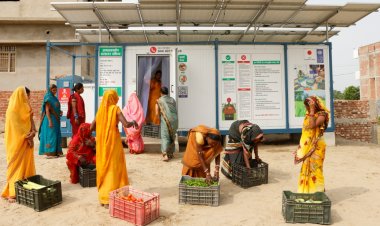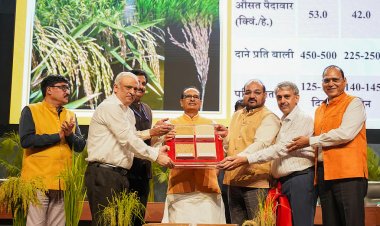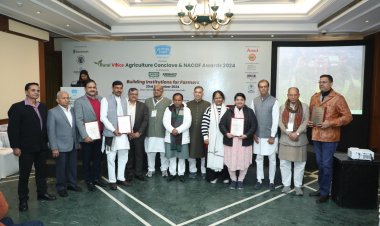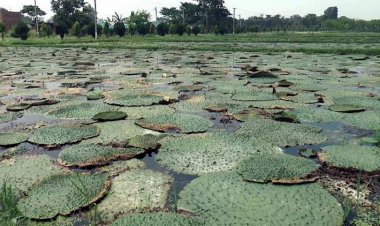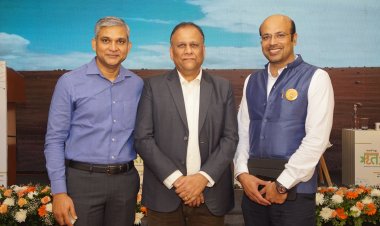Leveraging Climate Solutions to Address India's Pressing Challenges
Implementing and promoting climate solutions through a combination of top-down and bottom-up approaches, in a participatory and inclusive manner, can help address developmental challenges while simultaneously achieving climate and environmental objectives.

Despite India’s impressive 8.2 percent economic growth in the financial year 2024, the nation continues to grapple with significant challenges. Among these, rural distress, unemployment, and growing inequality stand out as some of the most pressing issues. These challenges are further exacerbated by the ongoing climate crisis. However, carefully implemented climate solutions can play a crucial role in addressing these issues.
Rural Distress, Unemployment, and Inequality
India’s agriculture sector is the primary source of livelihood for about 58% of the workforce, ensuring food, nutrition, and livelihood security for the nation (NatCOM 2023). However, the sector faces numerous challenges, including the depletion of net sown area, land-use change and diversion, land fragmentation, plateauing yield levels, inadequate credit availability, increasing pests and diseases, soil quality deterioration, and inadequate livestock feed. Additionally, population growth and dietary changes are shifting food demands. Climate risks further burden the sector by altering monsoon patterns, temperature and rainfall variability, and water availability for irrigation, leading to sea-level rise, submergence of coastal land, droughts, floods, soil erosion, and more. These changes impact food yields, supply, and prices, spurring inflation, economic uncertainty, and intensifying rural distress.
Scientific evidence shows that crop yield is a key livelihood resource that directly affects the poor, particularly those dependent on agriculture. Reduced crop yields and rising food prices, coupled with climate stressors such as drought, heatwaves, and water scarcity, worsen the plight of the already undernourished and poverty-stricken population. Unemployment is another grave concern, with India’s unemployment rate reaching 9.2 percent in June 2024. The agricultural sector, particularly, is hit hard by climate extremes, directly impacting farmers, while the broader labour market, especially for women, also suffers. According to the Centre for Monitoring Indian Economy (CMIE), India’s labour participation rate (LPR) was 39.5 percent in 2022, with the female LPR at just 9.2 percent in 2021-22, down from 15 percent in 2016-17. In the informal sector, India lost 16 million jobs in the past seven years alone.
Rising inequality is another significant challenge. From the 2000s to 2022-23, the top 1% of income and wealth shares in India reached their highest historical levels at 22.6% and 40.1%, respectively. India’s top 1% income share is among the highest globally, surpassing even South Africa, Brazil, and the US. Although the government claims to have lifted 25 crore people out of extreme poverty in the last decade, a substantial portion of the population remains impoverished and undernourished. This group, by some accounts, represents a quarter of the world’s undernourished people, reflecting severe poverty exacerbated by social, gender, and ethnic discrimination, along with rising living costs. Climate stressors such as loss of livelihoods, poor yields, and forced migration further aggravate poverty. The World Bank estimates that an additional 68 to 135 million people could be pushed into poverty by 2030 due to climate change, and worsening inequality.
These challenges are interconnected and exacerbated by climate extremes and their impacts. Investing in large-scale climate solutions can help address these issues.
Climate Solutions: A Potential Game-Change
In the agricultural sector, investing in ground-level vulnerability assessments and localized data to determine long-term climate scenarios and budgeting can lead to better and more sustainable policymaking, particularly in enhancing farmers' capacities and resilience. States such as Uttar Pradesh, Uttarakhand, and Assam are already investing in ground-level climate data, while Andhra Pradesh, Uttar Pradesh, and Uttarakhand have implemented green budget tagging—initiatives that should be scaled up to the national level. Additionally, investing in the capacities of farming communities and agricultural workers in financial planning and risk management is essential.
Regions with limited access to irrigation suffer worse crop damage. To combat this, climate adaptation technologies such as crop diversification, the use of traditional crops, and drip and sprinkler irrigation should be introduced. Enhancing access to advisory services, traditional knowledge systems, digitalization, market linkages, and the uptake of new technologies, along with the development of sound financial, technical, and risk capacities, would significantly increase farmers' resilience.
There are untapped opportunities to create green jobs through various government schemes. Initiatives like state start-up policies, portals like Jaivik Kheti for selling organic produce, carbon markets, and developmental schemes such as the Mudra Yojana, Rashtriya Krishi Vikas Yojana-Remunerative Approaches for Agriculture and Allied Sector Rejuvenation (RKVY-RAFTAAR), and Venture Capital Assistance (VCA) promote agro-businesses and skill development programs, with a focus on women self-help groups through schemes like Mission Shakti and DAY-NRLM. Investing in renewable energy, including green hydrogen, can also lead to new job opportunities. The just energy transition narrative focuses on providing decent alternative livelihoods to those affected by the shift from coal to a clean energy economy. Although ample policies and programs target the well-being of specific groups, large-scale sensitization is necessary to help people understand their objectives and benefits.
While top-down approaches can set clear policy guidelines, institutional frameworks, budgets, training, outreach programs, and monitoring, significant underutilized mitigation potential exists in demand-side measures such as food systems, buildings, and transportation, as supported by the Intergovernmental Panel on Climate Change (IPCC). There are numerous documented global examples of demand-side interventions, including ecosystem conservation, waterbody restoration, solar energy harnessing, waste reduction, plastic management, sustainable farming, and transport management. These interventions not only benefit the environment but also create livelihoods and reduce inequality. Sensitizing communities, especially educated youth and women, to such programs can empower them, reduce inequality, and contribute to environmental and developmental goals.
Implementing and promoting climate solutions through a combination of top-down and bottom-up approaches, in a participatory and inclusive manner, can help address developmental challenges while simultaneously achieving climate and environmental objectives.
(Dr. Vijeta Rattani works on issues related to the environment, climate change, and natural resource management. She has worked with think tanks, development cooperation organizations, and has also taught at universities.)



 Join the RuralVoice whatsapp group
Join the RuralVoice whatsapp group




















